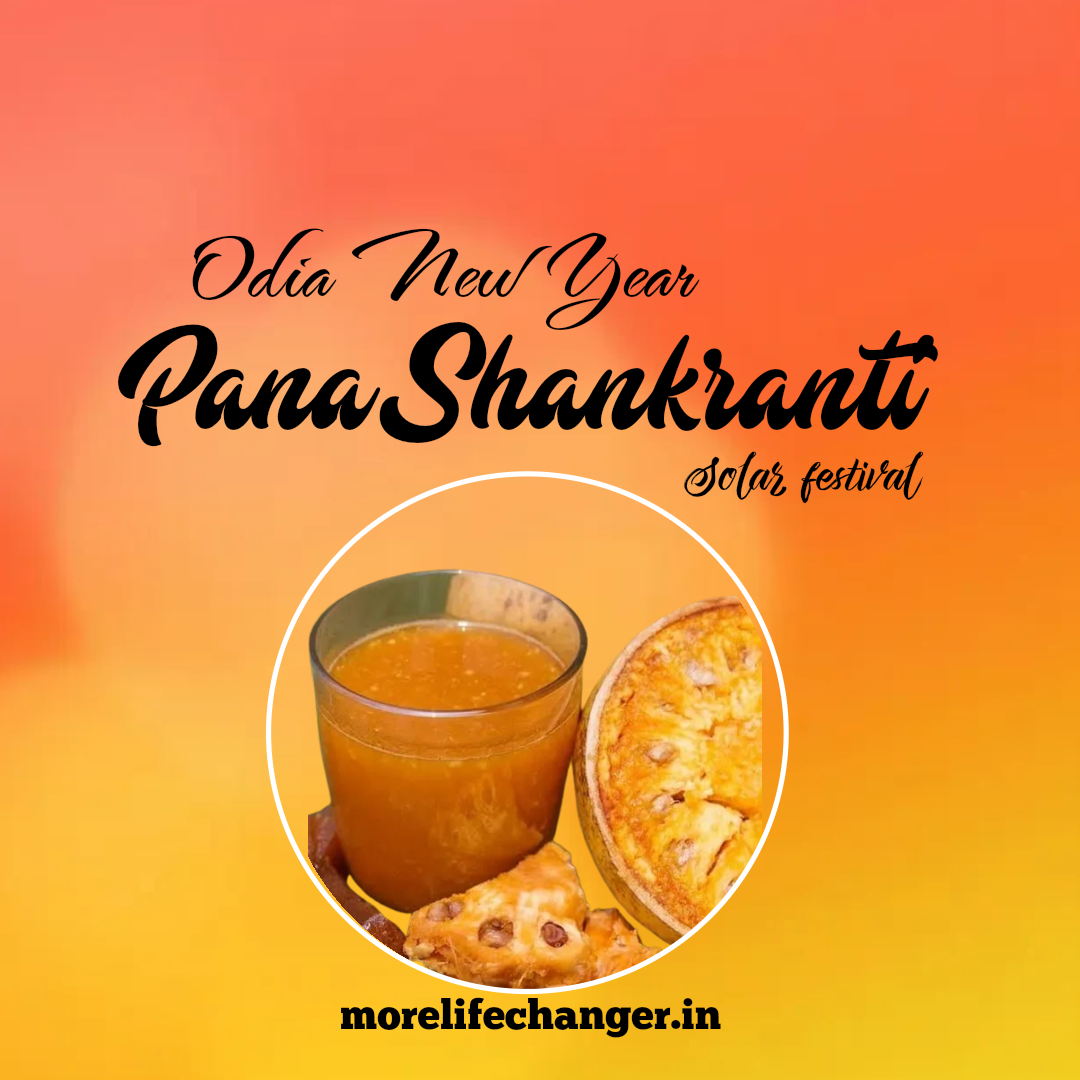Odia New Year, also known as “Pana Sankranti” or “Maha Vishuba Sankranti”, is an important festival celebrated in Odisha and among the Odia diaspora. It marks the beginning of the new year in the Odia calendar, and it typically falls on April 13th or 14th every year, aligning with the solar transition when the sun moves from the zodiac sign of Pisces (Meen Rashi) to Aries (Mesha Rashi). This event is also known as the Vernal Equinox and is considered an auspicious day for starting new ventures, farming activities, and spiritual practices.
Significance of Odia New Year (Maha Vishuba Sankranti)
The Odia New Year is celebrated with great enthusiasm in Odisha. It holds immense agricultural, cultural, and spiritual significance:
- Agricultural Significance: The festival marks the beginning of the harvest season in Odisha and is a time when farmers thank the gods for their harvests and pray for prosperity in the coming year.
- Solar Transition: This day marks the transition of the sun from Pisces to Aries, which signifies a fresh beginning in both the solar and agricultural cycles.
- Spiritual Significance: It is considered a new beginning, with people offering prayers to Lord Surya (the Sun God) and Lord Jagannath for good health, prosperity, and well-being.
Customs and Rituals
The celebration of Odia New Year involves a variety of customs, rituals, and traditional practices:
1. Preparation of Pana (Sweet Drink)
A special part of Odia New Year is the preparation of Pana, a sweet drink made from ingredients like coconut water, jaggery, fruit, and cardamom. Pana is typically served chilled and is offered to Lord Jagannath and other deities as a gesture of gratitude and respect. It is also shared among family and friends during the celebrations. There are different varieties of Pana made in Odisha:
- Mango Pana (during the summer season)
- Chhena Pana (made from fresh cottage cheese)
Pana is a symbol of refreshment and fertility, and it plays a key role in the celebrations.
2. Worship of Lord Surya and Lord Jagannath
The day begins with rituals to honor Lord Surya, the Sun God, who is believed to be the source of life and energy. People offer prayers and puja (worship) to Lord Surya and Lord Jagannath, seeking blessings for health, prosperity, and a successful harvest. The prayers often involve lighting oil lamps, chanting mantras, and offering fruits, flowers, and Pana to the deities.
- Lord Jagannath, the presiding deity of Odisha, is especially worshipped during the day, and it is believed that by seeking his blessings on this day, the year will be full of happiness and abundance.
3. Pakhala and Special Feast
Food is an integral part of the Odia New Year celebrations. One of the traditional dishes served on this day is Pakhala Bhata, a fermented rice dish, often served with fried vegetables and fish. The dish is considered refreshing during the hot weather and is a staple in Odisha during festivals.
Other traditional dishes like Pitha (rice cakes), Dalma (vegetable and lentil curry), and Chhena Poda (a baked cheese dessert) are also prepared to celebrate the occasion. These foods symbolize the rich agricultural harvest and the community’s connection to its roots.
4. Cultural Events and Folk Dances
Odia New Year is a time for cultural festivities, including folk dances and music. Various traditional dances such as Dandiya, Chhau, and Odissi dance are performed in some regions, celebrating the rich cultural heritage of Odisha. People also sing traditional bhajans (devotional songs) and padas (poetic songs) that describe the significance of the festival and the stories of deities.
5. New Clothes and Socializing
Just like most New Year celebrations, people wear new clothes on Odia New Year as a symbol of starting fresh. Families visit each other’s homes, exchange gifts, and share festive meals. This is also a time to renew relationships, strengthen social ties, and celebrate together as a community.
6. Kites and Festive Fun
In many parts of Odisha, kite flying is also a fun activity associated with Odia New Year. People take to the rooftops and open fields to fly colorful kites, which adds a joyous and playful atmosphere to the celebrations.
7. Visiting Relatives:
Families visit each other, exchange gifts, and enjoy festive meals. The day is also a time for socializing and strengthening community bonds.
Importance of Maha Vishuba Sankranti
It marks the solar transition when the Sun moves from the zodiac sign of Pisces (Meen Rashi) to Aries (Mesha Rashi), which typically falls around April 13th or 14th each year. This day is significant for the Odia people as it is a combination of a New Year celebration and a harvest festival.
Significance of Maha Vishuba Sankranti
- New Year Celebration:
- Maha Vishuba Sankranti marks the beginning of the new year in the Odia calendar. It is a time for renewal, starting fresh with new hopes and aspirations. People celebrate by wearing new clothes, cleaning their homes, and performing rituals to invoke the blessings of the Sun and Lord Jagannath, the deity of Odisha.
- The transition of the Sun into Aries symbolizes the start of a new cycle, and it is an auspicious occasion for people to seek prosperity, happiness, and well-being in the coming year.
- Solar Transition:
- The day marks the solar new year because it coincides with the solar transition. The Sun enters the Mesha Rashi (Aries) after spending about a month in Pisces (Meen Rashi). In the traditional Hindu calendar, the Sun’s movement is considered to bring new energies and auspiciousness to the world.
- In some parts of India, this event is also known as Vishu, Baisakhi, Puthandu, or Rongali Bihu, depending on the region.
- Agricultural Significance:
- Maha Vishuba Sankranti is celebrated during the start of the harvest season, particularly in Odisha. People pray for a good harvest, thank the gods for the agricultural abundance, and seek blessings for the prosperity of the coming farming season.
- It is seen as an occasion to celebrate nature’s bounty and the fruits of the earth.
Odia New Year vs. Other Regional New Years
Odia New Year shares similarities with several other regional New Year celebrations in India, such as:
- Baisakhi in Punjab and parts of North India
- Baisakh in Bengal and other parts of Eastern India
- Rongali Bihu in Assam
- Puthandu in Tamil Nadu and Vishu in Kerala
However, Maha Vishuba Sankranti or Odia New Year is unique in its rituals, such as the offering of Pana, the significance of Lord Jagannath, and the traditional dishes like Pakhala.
Odia New Year in Modern Times
While the traditional aspects of Odia New Year remain deeply rooted in Odisha’s culture, the celebration has evolved in modern times. People now celebrate the festival in urban areas, where large community gatherings and cultural programs are held. Many people living outside of Odisha, particularly in other states of India and in the Odia diaspora, also celebrate Odia New Year with cultural programs, traditional music, and food.
Pana Sankranti
Pana Sankranti is primarily a New Year celebration for the Odia people but also carries elements of a harvest festival. It marks the transition of the Sun into Aries (Mesha Rashi) and is observed as the solar new year in Odisha, typically around April 13th or 14th. This day is also known as Maha Vishuba Sankranti in the Odia calendar.
Dual Significance of Pana Sankranti:
- New Year: Pana Sankranti marks the beginning of the Odia New Year (Vishuba Sankranti) and is a time for new beginnings, which is why it is celebrated as a new year festival. It is a day for people to renew their lives, express gratitude for the past year, and seek blessings for prosperity and happiness in the upcoming year.
- Harvest Festival: Since it is celebrated in the mid-April, it coincides with the beginning of the harvest season in Odisha. The festival honors the agricultural cycle and is seen as a way to thank the gods (particularly Lord Jagannath and Lord Surya) for a successful harvest . Also pray for a good harvest in the coming season. While it is more of a new year celebration, the festival does have agricultural undertones, given its timing.
How It Combines Both:
- Pana Sankranti includes agricultural rituals, where people offer prayers for prosperity and a good harvest. The traditional Pana drink, made with coconut water, jaggery, fruits, and other ingredients. It is a symbolic offering for good fortune in the coming year, particularly in the context of agriculture.
- While it celebrates the start of the new year, the festival also reflects gratitude for the land and the harvest.
Please join discussion on Facebook about world facts and its secret .

